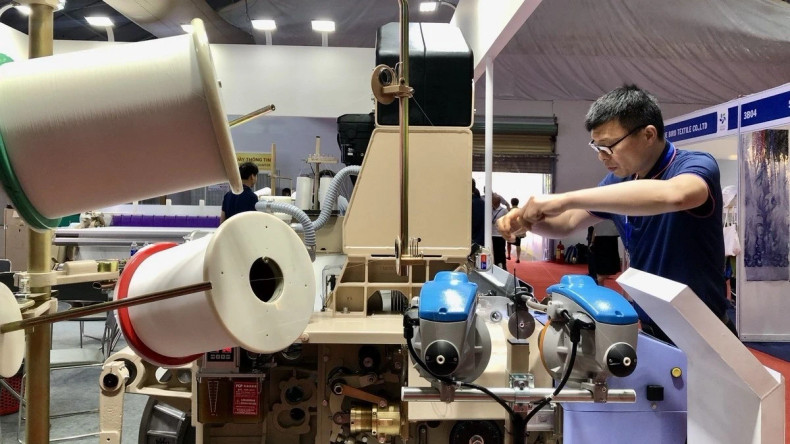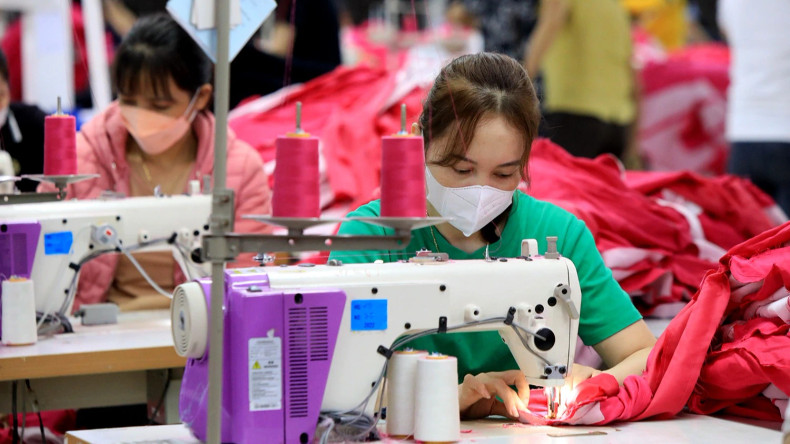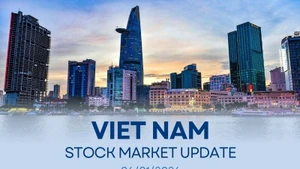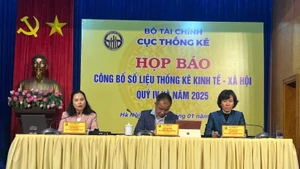To seize these opportunities, Vietnamese textile and garment enterprises need to develop domestic supply chains, adopt clean production technologies, and enhance the quality of the workforce, thereby increasing competitiveness and expanding their market share in the EU.
Major opportunities from the EVFTA
The EU is currently considered one of the largest and most potential markets for textile exports, including from Vietnam. With nearly 450 million consumers, the EU is the world’s leading unified market, second only to China in textile exports and re-exports.
In 2023, the EU imported 4.1 billion EUR worth of textiles from Vietnam, accounting for 11.5% of the industry's total export value. However, the strict sustainability requirements from the EU pose significant challenges for Vietnamese textile enterprises.
To capitalise on the opportunities from the EVFTA, the textile industry needs to implement suitable strategies and actions to boost exports and enhance competitiveness.
The EVFTA, which officially came into effect on August 1, 2020, has opened numerous opportunities for Vietnam's key export industries, with textiles being one of the biggest beneficiaries.
Under the EVFTA commitments, 100% of Vietnam’s textile products will enjoy a 0% import tariff after a maximum of seven years from the agreement's entry into force, providing strong momentum for expanding market share in the EU.
According to the Vietnam Trade Office in Belgium and the EU, since the EVFTA took effect, Vietnam's market share of the EU's total textile imports from non-EU countries increased from 3.3% in 2020 to 4.3% in 2023.
In 2023, Vietnam rose to sixth place among the largest textile suppliers to the EU, following China, Bangladesh, Turkey, India, and Pakistan.
Despite these positive developments, Vietnam's textile market share in the EU remains modest compared to its potential.
The EU imported 115 billion EUR worth of textiles from non-EU countries in 2023; with Vietnam accounting for only 4.1% of that market share, there is still significant room for growth and expansion of Vietnam's textile exports into this market.
Challenges from the EU's new regulations
However, great opportunities always come with significant challenges. The EU is currently implementing strict policies on sustainable development and environmental protection for the textile industry. The textile industry in the EU is considered one of the most polluting, ranking fifth in greenhouse gas emissions and third in putting pressure on water and land resources.
To address this situation, the EU introduced the Circular and Sustainable Textiles Strategy in March 2022. The goal is that by 2030, all textile products on the EU market must have a long lifespan, be recyclable, and largely made from recycled fibres.
New policies such as eco-design, extended producer responsibility, Green claims, and the Carbon Border Adjustment Mechanism (CBAM) set stringent standards for imported textile products. These regulations require Vietnam's textile industry to undergo a strong transformation toward green and sustainable development.
Businesses not only need to comply with the rules on origin but must also ensure that their products are environmentally friendly and recyclable as well as minimise negative impacts on natural resources.
 |
| Strict regulations from the EU require the Vietnamese textile and garment sector to have a strong transformation towards greening and sustainable development. (Illustration photo: VNA) |
One of the biggest challenges that Vietnamese textile enterprises face under the EVFTA is the rule of origin.
To benefit from the tariff advantages of the agreement, textiles exported from Vietnam must meet the "fabric forward" rule of origin. This means that enterprises must use materials produced in Vietnam or from countries with trade agreements with the EU, rather than importing from non-EU countries.
Currently, Vietnam's textile and garment sector heavily relies on imported raw materials, especially fabrics. According to the Vietnam Textile and Apparel Association (VITAS), domestic fabric production capacity meets only about 20-30% of demand, with the rest depending on imports from other countries. This makes it difficult for businesses to meet the origin requirements, resulting in the loss of tariff benefits under the EVFTA.
In addition, the EU's new sustainability regulations also pose challenges for transforming production models. To meet the requirements of eco-design and recycling standards, textile companies must make significant investments in production technology, enhance management capabilities, and develop a high-quality workforce. These factors are crucial to the competitiveness of businesses as sustainability regulations become increasingly stringent.
Sustainable development solutions for Vietnam's textile and garment sector
 |
| To overcome the challenges posed by the EVFTA and leverage growth opportunities in the EU market, Vietnam's textile and garment sector needs to implement specific strategic measures. (Image for illustration: VNA) |
To overcome the challenges posed by the EVFTA and leverage growth opportunities in the EU market, Vietnam's textile and garment sector needs to implement specific strategic measures.
According to the Vietnam Trade Office in Belgium and the EU, developing a domestic raw material supply chain is crucial for Vietnam’s textile and garment sector to take advantage of tariff preferences from the EVFTA.
The government should facilitate investment in domestic fabric and material production while encouraging large enterprises to collaborate with small and medium-sized businesses to build a sustainable supply system.
Specifically, it is necessary to build textile industrial zones with advanced infrastructure that meets environmental standards to attract investment in raw material production. Businesses must focus on increasing localisation rates, enhancing self-reliance in raw materials, and improving competitiveness in international markets.
Adopting clean production technologies, using renewable energy, and reducing emissions are essential requirements for textile and garment enterprises wishing to export to the EU market. The industry needs to invest in technology solutions that save energy, reduce water consumption, and cut greenhouse gas emissions.
In addition, the businesses should invest in research and development to create products made from recycled and environmentally friendly materials that comply with the EU's eco-design requirements.
Transitioning to a sustainable production model helps businesses not only comply with EU regulations but also build an eco-friendly image and enhance brand reputation and value.
To meet the EU market's increasingly stringent demands, Vietnam's textile and garment sector should focus on developing high-quality human resources, particularly in production management, design, and product development. Businesses need to invest in training and upskilling their workforce, while also attracting high-level talent in fashion design and textile engineering.
In the context of globalisation, close cooperation with international partners, especially businesses and policymakers in the EU, will help Vietnamese textile enterprises understand sustainable development trends, share experiences, and identify suitable solutions to enhance competitiveness.
Additionally, the state should continue promoting trade activities in the EU market, establishing programmes to support businesses in understanding and adapting to new EU regulations, thereby creating favourable conditions for expanding their market reach.
















